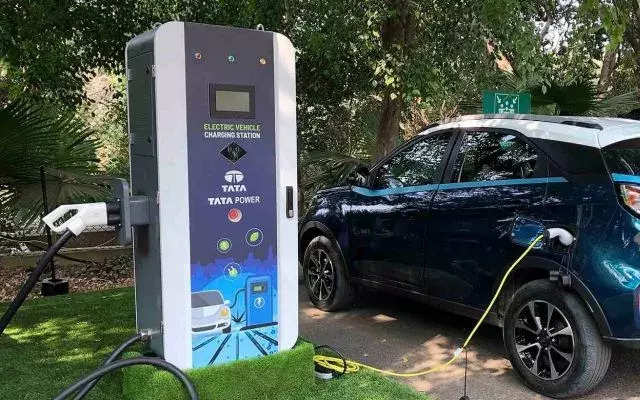
The future is electric. However, the journey there has its own share of challenges. Hybrids are seen as the bridge to the pure electric vehicle (EV) era. However, Tata Motors has drawn a strategy to leap over that bridge. Battery electric vehicle (BEV) technology is what it is putting all its bets on.
“If I’m not already invested in hybrids, why would I direct my resources to that technology also? I’ll put my 100% resource towards what is the future,” says Shailesh Chandra, MD, Tata Passenger Vehicles and Tata Passenger Electric Mobility, in the most recent episode of ETAuto’s Target Net Zero series on carbon neutrality and sustainability. Putting money where the mouth is, Tata Motors has lined up USD 2 billion investment purely for BEVs.
Unlike Toyota and Maruti Suzuki who, between them, launched the first set of strong hybrids in the Indian volume passenger vehicle (PV) market, Tata Motors isn’t looking at that segment, except in one condition, if at all that happens. “For us, it does not make sense till we get cornered by the end of the decade and this technology becomes an imperative for some reason. We’ll think then, but in the next five years, I don’t see a role for hybrids in our portfolio,” he says.
If the launch response of 40% demand for the Maruti Grand Vitara’s strong hybrid variant is any indication, there is possibly an appetite for hybrids in India. Bypassing the hybrid market may cost some volume, but it also depends on how an OEM plans to cover that loss if any.
Industry analyst and Senior Partner and Group Head at NRI Consulting & Solutions India, Ashim Sharma, says, “As the industry evolves, consumers will have a broader basket of technologies to choose from. While eventually in the long term, we may have pure EVs based on batteries or even Fuel Cells, in the interim some OEMs may invest in both hybrids and pure EVs as well as other alternative fuels, others may invest only in Pure EVs based on their capability, capacity to invest as well as market strategy.”
1 new Tata EV in every 2 years
In a fledgling domestic electric PV market of 21,972 units during the first half of the current financial year, Tata Motors has an 87% market share with sales of 19105 units. Maintaining such a dominant position may not be possible for too long as the electric PV market is set to see some major product interventions from the likes of Mahindra & Mahindra and Hyundai from 2024.
PV market leader Maruti Suzuki is also set to enter the pure EV fray from 2025. And given its focus on playing the volume game, one can expect a Maruti EV to be among the more affordable ones, if not the most affordable.
As per its strategy to protect and grow its turf, Tata Motors plans to launch a new EV at least in every two years from 2025 when the production version of the Avinya concept will be launched. With the Avinya, Tata Motors also plans to tap matured EV markets like Europe.
Before the Avinya, the Tata Curvv SUV will make its debut in 2024. Under Tata’s ‘Gen 2’ platform strategy, it will offer options of both electric and conventional combustion powertrains.
Tata Motors’ focus only on BEV technology seems to be paying off so far. During the first half of the current financial year, sales of Tata Passenger Electric Mobility stood at 20805 units, over 4X growth compared to the 4419 units during the same period last year. With the latest addition of the Tiago EV, the most affordable electric car, the growth curve is set to rise even steeper. .
Triggered mainly by the introductory price range of INR 8.49 lakh to 11.79 lakh, reserved for the first 10,000 bookings of the electric hatchback, customers lapped up the entire lot on Monday, the first day of the model’s booking. To leverage the demand opportunity, Tata Motors extended the introductory pricing to an additional 10,000 customers.
PV segment energy–mix outlook
As the energy mix in the mobility industry evolves, much of it due to Government policies, the PV market is also set to see some significant changes by the end of this decade. Chandra estimates the share of electrics and CNG, the other energy option that Tata Motors is increasing its bet on, in the domestic PV market to be in the range of 25%-30% each by 2030. By then, Tata Motors targets 50% of its PV volumes to be EVs.
Also Read:














